How To Get Your Cold Emails Noticed, Read & Replied To [Whitepaper]

TABLE OF CONTENTS
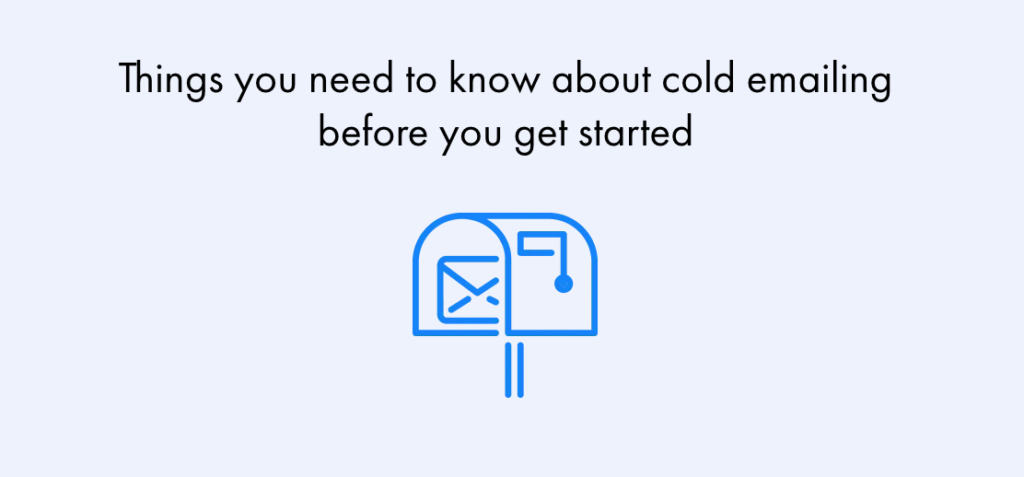
Anyone with an email inbox knows that, when it comes to sales, cold outreach is one of the most popular techniques today.
Your potential clients are being constantly bombarded by cold emails, and many of them are from your direct competitors. If you want to stand out in their inbox and get that “cold reply,” you’re going to need to put some real effort in and dig below the surface.
Just like traditional advertising, it’s important that your cold email grabs attention and motivates action. No one enjoys receiving boring emails selling generic products and services.
If the idea of creating a compelling email campaign seems a bit overwhelming, don’t panic! We’re here to help you with every step, from writing an email that will appeal to your ideal clien to making sure it’s delivered to the right person. We’ll even show you how to add an extra sprinkle of magic that’ll have potential clients filling your inbox with replies.
WHAT EXACTLY ARE COLD EMAILS?
Before we go any further with cold emailing, it’s important that we’re on the same page with our definition. When we refer to cold emailing, we’re talking about reaching out to complete strangers (and potential customers) who have had no prior relationship with you. Importantly, this isn’t to be confused with spam.
Spam emails will typically use misleading subject lines and bulk messages without any personalization. They’re untargeted and typically try to trick the recipient into opening or responding to the email. To make sure you’re not unintentionally sending spam, a good starting point is checking out the CAN-SPAM Act to ensure your email complies with the guidelines.
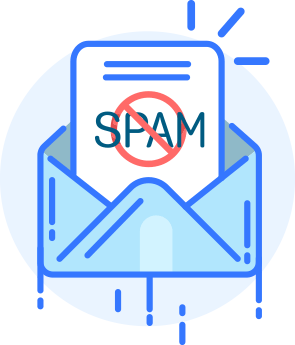
A successful cold email outreach plan will typically use personalized cold emails to make contact with potential customers you’ve never connected with. With a professional, friendly tone and effective choice of words, the right cold email will get your potential customer’s attention and lay the groundwork for an ongoing customer relationship.
This is cold email outreach and, and love it or hate it, it has its purpose. Cold outreach is one of the most efficient lead generation tools you can use. If used properly, it can get you positive leads with minimal effort.
Better yet, when leads generated from cold emailing actively respond to your campaign, their conversion rate is higher than leads gathered from other sources.
WHY COLD EMAILING IS PERFECT FOR YOU
Cold emailing has been given a bad rep, with overflowing inboxes and annoyed customers. So why should you spend your time learning this technique? The answer is simple:

Leads!
When done properly, cold emails are one of the most efficient ways to generate new leads and find new customers.
The reason cold emails have such a bad rep is they’re often composed and executed terribly, with no thought or planning.
Most people treat cold emails as poster advertising their business. That would be great if it were 2005, but now everybody advertises, and consumerism is at its peak.
You can’t list your services and expect recipients to call you up with their requirements and demand you take their money.
Instead, you have to put some real work into the email to ensure it’s liked by the recipient.
A great performing email campaign is one that is personalized to the last detail; that kind of hard work can get you significant response rates of 50% or even higher.
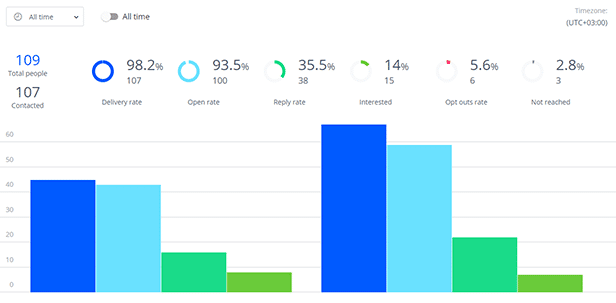
If that’s not a good enough reason for you, here are some more reasons cold emailing is perfect for you:
- Cold emails are a great way to get your brand out. Regular, consistent emails increase the likelihood that they’ll remember your company and brand.
- As a side benefit, cold emails can help with networking. Although it may seem slow, it’s possible to build a strong network if you’re committed to providing your recipients with practical value in your emails.
- You can build up a loyal customer base through regular cold email campaigns. Cold emails are a way to stay in touch with potential customers and should lead to a relationship, progressing to warm emails with current customers. Regular, helpful information from you means they’ll be more likely to do business with you. Just make sure you’re not emailing them too often—you might end up being viewed as a nuisance.
- Once you’ve created your first great cold email campaign, you can use automation to create your next campaign with less effort. This means you can start generating leads with minimal investment, leaving you with more time to focus on converting them.
- Starting a conversation with your potential customers is crucial for conversion and growth. That’s why we’ve stressed it so many times: a customer who’s aware of you and connected with you is more likely to do business with you.
HOW TO USE COLD EMAILING
To understand cold email “how-to-use” basics, we have to understand the objective.
Many people think of cold emailing as a sales tool and sure, the goal is to, at some point, make a sale. But does that mean your email should read like a sales letter? Absolutely not!
Emails focused on sales are less likely to generate leads than emails providing value.

Your aim should be to start a conversation rather than sell your product. Unless you’re in retail, a direct conversion from your email is simply not going to happen.
Put yourself in your customer’s shoes. Their inbox is flooded with emails daily, most of which they have zero interest in. An email saying “Grab our new data science course!” may be straightforward, but it’s impersonal and practically invisible in a crowded inbox.
Instead, a great way to boost reader engagement is by providing tangible value, along with any marketing message. This is a great way to boost reader engagement. For example, the subject line “Learn how to survive in the age of automation” promises valuable, helpful information for readers interested in the topic. It’s then easy to include sales information for your product/service without appearing like a pushy car salesman.
To get the balance right, this checklist will help you compose an effective cold email that your recipients will actually want to read:
- Provide genuine value, not a pushy sales campaign.
- Personalize your emails. Readers want to be treated like people, not numbers.
- Email with the aim of starting a conversation or building a relationship.
- Ensure the receiver would like what they’re receiving.
- Be brief but cover the important details.
- Be conversational. Don’t use unnecessarily complicated words and jargon in your emails.
- Never use generic text in your email. It’s obvious to the reader and will make them feel unvalued.
- End your email with an open-ended question, but never push them

WHAT YOU NEED TO KNOW ABOUT COLD EMAILING BEFORE YOU GET STARTED
Hopefully, you’re now convinced of the benefits of cold emailing and ready to start. Use these hacks to make sure you’re getting the best response rates possible:
- Using the right email list is the first step towards a high response rate. Put some time and effort into curating a high-quality list. Various tools like Reply.io, Hunter.io, and Pipetop will help you find the right email addresses.
- You don’t have to do it yourself – Tools like Reply do all the hard work for you, allowing you to send automated emails that don’t look like mass messages.
- Follow-up is the key. Efficient follow-up ensures better results, and automating the whole process is a lot easier than manually tracking every single thread. For example, Reply sends automatic follow-up emails at user-set intervals if there’s no response from the recipient.
- Learn the rules of cold outreach emails. You can’t send any old email to busy people and expect them to reply. You need to put actual effort into it if you want a positive response.
- Reach out for business, not sales. When you reach out to make a business connection, the response rate is much higher than when you’re selling something outright. Make connections and half of your sales will take care of themselves. Mindlessly sell, and you’ll end up driving your potential customers away.
EASY FIX – TEMPLATES THAT WORK
Using the above hacks, you now have the principles of a great cold email campaign, but what about composing the actual email copy? What are some great ways to do that? The following list is something you can use as a quick tool to devise any cold email:
- Introduce yourself – Cold emailing is all about reaching out to someone, but you don’t want to creep them out. Introduce yourself and your purpose in writing to them. This will establish a clear link in their mind.
- Introduce your idea/business/product right away. DO NOT SELL! The cold email pitch needs to market you as a connection, not sell your product. Keep it specific and brief.
- Ask for feedback. Even if most people don’t respond to a pitch, they’d be happy to provide feedback. It’s a great way to start a connection.
- End with a clear call to action. If you leave the message with a vague promise or hope, most people won’t reply. Tell them what to do (sign up/reply/reach out) and how to do it.
To see this in action, take a look at some templates that have worked well in the past.
Template #1: HubSpot calls this a repeat website visit template, and this is one of our favorites.
Hi {CONTACT.FIRSTNAME},
You and a number of your colleagues at {!Lead.Company} have visited our website and << INSERT ACTION ON SITE >>.
I was wondering whether they were trying to figure out how you might << YOUR BUSINESS SOLUTION HERE >>? So, I did some research and found some areas of opportunity for you.
One idea I have is to << INSERT SUGGESTION FROM RESEARCH >>.
With the number of people researching our company, would it make sense to talk for 10 minutes?
Hope to hear from you, {CONTACT.OWNER_NAME}
Template #2: Here’s a helpful sales template by the guys at Right Hello:
Hi <First_Name>,
I just wanted to tell you that I really love what you’re doing at <Company>. If I could ever help you with anything, that would be awesome!
You might find my experience in <Your_Experience_Domain> helpful. I blog a bit about it – here’s a link <Content_Link> if you would like to check out if I’m the real deal.
I’d love to steal some of your time to talk about what you do. Would you mind, maybe at least a 15-minute call?
This is a great example of a flattering cold outreach email. You reach out with a warm compliment and an offer to help. Most recipients will at least agree to hear you out after such a friendly message. If not, you’ll still gather a few brownie points for the future.
Template #3: Pipetop’s focus on benefit template is no-nonsense, which is why it works so well:
(CONTACT.FIRSTNAME), In working with other (INSERT INDUSTRY OR POSITION), one of the key issues they’re struggling with is (INSERT KEY ISSUE). This past year we helped numerous companies to (INSERT BUSINESS DRIVER), resulting (MONEY SAVED, REVENUE ADDED, PRODUCTIVITY INCREASES). If this is something you’re challenged with, too, let’s set up a quick call. I have some ideas that might help. All the best, (CONTACT.OWNER_NAME)
This template addresses real issues concerning the recipients as an introduction and then offers a viable solution. It also offers social proof that the sender isn’t a complete newbie and knows what they’re doing. It’s also specific and has a nice, clear call to action. It’s likely to get appreciated by busy professionals who don’t like people taking their time for granted.
Try these templates and see the results for yourself. These tried-and-tested templates will ensure a good response rate and serve as an ideal starting point for setting up your own tests for optimization.
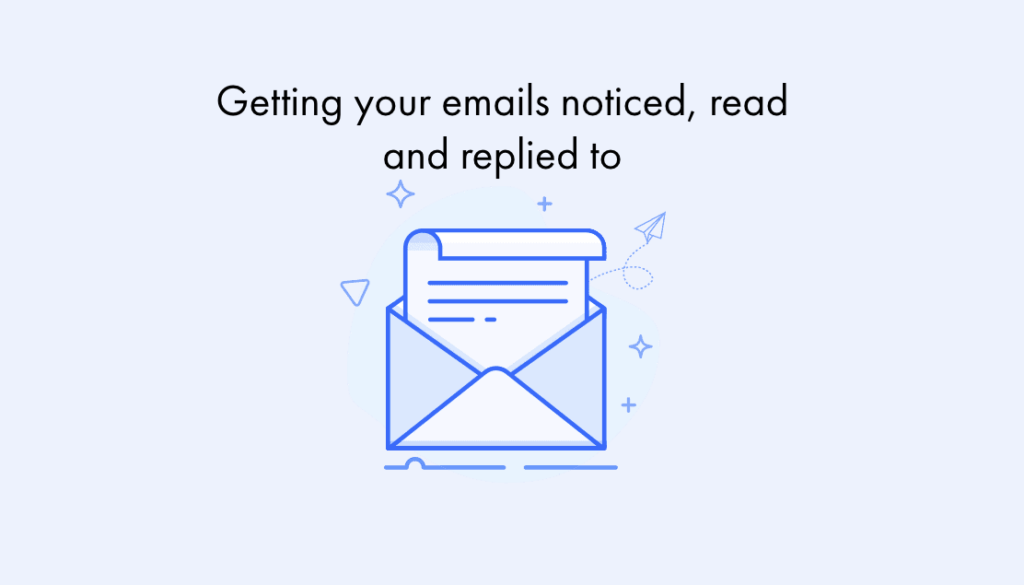
What’s the bane of cold emailing?
The dreaded “Mark All As Read” button.
Many of us pass a cursory glance over the emails that have arrived in the morning, select them all, and mark them as unimportant.
So how can you get past this mental Adblock that people have developed after years of being subjected to relentless advertising?
Well, there’s a few tricks to that.
Let’s break down the process of email marketing, starting with the first major hurdle – are your emails even reaching your target audience?
SPOILER ALERT: YOUR EMAILS AREN’T GETTING DELIVERED
Plenty of us have this unfortunate belief that bulk marketing has very low returns.
The truth is returns on cold emailing can vary greatly. The latest figures show an average CTR of anywhere between 4% and 13%, depending on the industry. Highly targeted campaigns can receive much better rates, and conversely, a poorly thought-out campaign can do much worse.
So what’s the difference between the guys who send ten thousand emails and get one response, and the guys who send a hundred emails and get twenty cold email responses?
The answer is twofold – data quality and targeting.

Rather than compiling their own email lists, most people buy them instead. Due to the assumption of a low return, very little care is put into curating the email addresses. The low quality of this data means that only a small percentage of the recipients will actually be interested in your product or service, further lowering the cold email industry response rate.
The second aspect flows out of the first. Low-quality data makes targeting your desired market that much harder.
The worst-case scenario? Sending emails to too many uninterested people can have you tagged as spamming.
While getting tagged as a spammer isn’t a death knell, it does make your job much harder. Even though spam filters are getting smarter over the years, plenty of them still take a blanket approach to blocking spam. This results in completely legit emails getting sent to the spam folder for reasons as ridiculous as mentioning Oprah. No joke. Other examples of words that have previously been known to set off alarm bells include ‘Earn $,’ ‘f r e e,’ and ‘Urgent.’
My point is once you have identified your market and acquired the email addresses, it’s time to figure out how to get through the ever-upgrading spam filters.
LET’S MAKE FRIENDS WITH SPAM FILTERS AND AVOID THEIR WRATH
So here’s the secret to getting past every single type of spam filter: You don’t.
It would be pointless to list all the requirements to avoid all the spam folders. Reading a six hundred-page book to write one fantastic email is counterproductive, and that book would be out-of-date as soon as it was released anyway.
Instead, here are the overall best practices to make sure that your emails don’t wind up in the spam folder.
- Use proper spelling. When writing cold emails, double-check for any spelling mistakes. For a start, plenty of people will delete cold emails as soon as they see spelling mistakes, but the bigger issue is the spam filters. Plenty of filters block emails with spelling errors, as that was one of the first workarounds by spammers. Early spammers used modified spellings for flagged words to get around spam filters. So use spell check!
- Don’t keep emailing addresses that bounce. Sending cold emails to a large number of people can result in soft bounces or hard bounces. Soft bounces happen when the recipient’s email address is valid, but the mail can’t get delivered for a variety of reasons. Hard bounces happen when the address itself is invalid. Email bouncing is undesirable, but the issue crops up when you keep sending emails and they keep bouncing. A high bounce rate can lower your rating with ISPs, making it harder for you to get your emails delivered. Prune your contact list of these addresses as soon as possible.
- Get yourself added to address books. If your email address gets added to your recipient’s address book, you can rest easy knowing you’re whitelisted. Spam filters tend not to block incoming emails from addresses in address books unless they throw up way too many red flags.
- Avoid obvious spammy practices. If you get a mail with the subject title “GET 1000% RETURNS ON YOUR INVESTMENT NOW!!!!!!!”, exactly how much are you going to trust it? I’m guessing not a lot. Living in this ad-saturated world, most of us have developed a sixth sense of spam. Even if this kind of mail somehow gets through spam folders, it will get disregarded by the reader.
Following these best practices will help your emails get into inboxes. Once they’re delivered, though, the next step is to capture the recipient’s attention! What better way to do this than to craft the perfect subject line?
THE BIG S – SUBJECT LINES!
A good subject line should do three things –
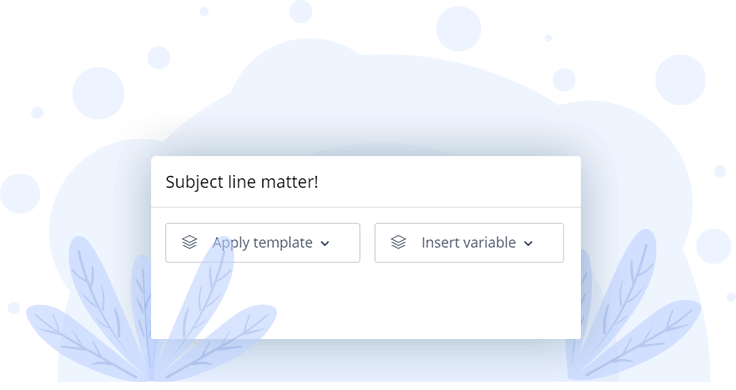
- Invoke the desired emotion in the reader.
- Be relevant.
- Engage attention with interesting preview text.
Let’s break each of these down.
Invoke the desired emotion in the reader – There are four emotions particularly effective at getting readers to open your emails: Curiosity, urgency, fear and excitement. Blatantly transparent efforts at tugging on heartstrings get ignored, but piquing the reader’s interest can pay off. Here are some examples of each type of subject line –
- Curiosity: “Quick Question” – This subject line grabs attention. It’s short, doesn’t give too much information, and makes the reader curious to find out what exactly the question is.
- Urgency: “There are only 1200 tigers left in the wild. Act now to save them.” – This is a classic marketing technique, but it’s still in use for a reason. These subject lines create a sense of scarcity and urgency, driving people to act; in this case, open the email.
- Fear: “There are only a hundred copies left. Will you be able to snag the last one?” – These subject lines don’t use fear in the classical, horror movie sense. Instead, they play on the fear of missing out. Evoking this in subject lines can improve CTR in the short term, but beware: Overuse can backfire.
- Excitement: “The New Book of Strategies is out!” – Creating excitement in readers is hard work. It takes precise targeting and interesting content. If you manage to get readers excited about your content, you’ll have a large number of loyal customers.
Be relevant – Putting in a reference to current affairs or a recent event can improve CTR.
It implies the email contains fresh content or an opinion on recent events that could prove insightful.
A general rule of thumb is your references shouldn’t be older than a month. Depending on how often the story is running in the news cycles, the time to reference an event may increase or decrease. Keep an eye on trends.
Engage attention with interesting preview text—in many email clients, the first few words of the email will often appear as preview text, making them a vital part of getting your email opened.
The same rules for evoking emotions apply here too. If the preview text is engaging, the odds of opening the email shoot up.
If these guidelines are followed, people will open the emails you send them. But unless the content is good, well, there go your customers. So once they’ve opened your email, how do you make the most of the opportunity and keep them onboard?
YOUR TARGET AUDIENCE NEEDS TO BE WOOED
Like any good relationship, you need to keep the spark alive and woo your readers!
All the information given in this book shouldn’t be treated as a simple checklist. Instead, it should be viewed as a foundation for building your relationship. What does this involve?
Pay attention to what your audience wants, as well as what they could want. Give them your time and attention. Treating your audience well benefits them and you, for the simple reason that reputation (whether good or bad) spreads.
If you create a product with care, catering to the requirements of your audience, they will respond. High-quality products attract a high-quality audience.
If you manage this well, you win the elusive prize marketers chase: a loyal customer base! Once you’ve built your email campaign on this solid foundation, all that’s left to do is wait and analyze how they respond to your cold emails.
WATCHING THE REPLIES TRICKLE IN
Once an email campaign is launched, and everything that can be optimized has been, it’s time for the hardest part of the campaign.
Sending a cold email sequence and getting responses for cold emails (or just waiting).
If your campaign has been crafted properly and carefully targeted, the responses should start trickling in soon enough.
While the number of responses will likely be low, the quality of the responders will be high. They will be far more likely to buy your products and use your services because they will have seen the value you provide. After all, while scams and poor-quality products may have a brief short-term success, only products providing actual value will succeed long-term in the market. If you become known for providing true value to your customers, nothing will stop you from running a successful marketing campaign!
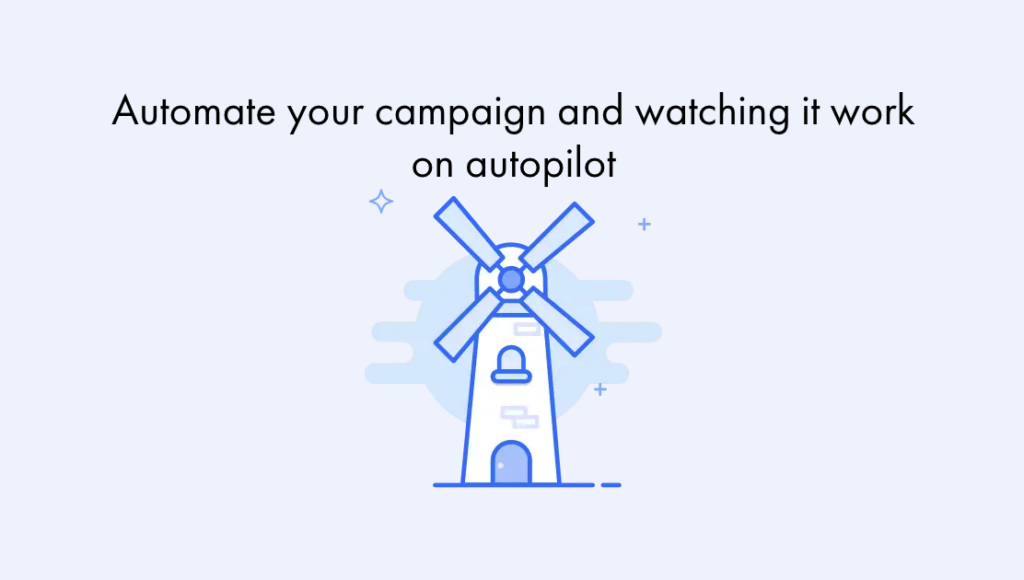
It’s a great feeling to pull off a successful campaign and watch the results unfold in front of your eyes.
You can’t wait to do it again, right? Wrong?
Planning and executing an effective email campaign is a lot of work, after all.
If you were to spend all that time on email campaigns every day, you wouldn’t have time to work on the rest of your funnel, such as actually converting those leads you’ve generated into loyal customers.
So what can you do in order to achieve the same results without going through all that work every time?
The best way is to automate your campaign and create new campaigns with minimal effort based on the foundation laid by you in the initial campaigns. This will help free up your time to work on conversions and other business activities.
COLD EMAIL AUTOMATION EXPLAINED
Automating cold email outreach effectively can streamline your efforts, making your lead generation process both efficient and scalable. Here’s a step-by-step guide to setting up a cold email automation process that’s both effective and respectful of your recipients’ inboxes.
1. Define your goals and target audience
- Identify your objectives: What action do you want recipients to take? This could range from booking a demo, signing up for a webinar, or simply engaging in a conversation.
- Segment your audience: Tailor your campaigns to specific segments of your audience based on industry, role, or interest to increase relevance and engagement.
2. Build a quality email list
- Source accurately: Use tools like LinkedIn Sales Navigator, Hunter.io, or Voila Norbert to find potential contacts. Ensure your list is clean and up-to-date to maintain high delivery rates.
- Ensure compliance: Make sure your list-building practices comply with regulations such as GDPR, CAN-SPAM, or CASL.
3. Craft your email sequence
- Personalize your message: Use personalization tokens (like {{first_name}} or {{company_name}}) to tailor your emails. Personalization extends beyond just using the recipient’s name; customize your message based on the recipient’s industry, challenges, or recent achievements.
- Create a sequence: Develop a series of emails, including initial outreach and follow-ups. Each email should provide value and a clear call-to-action (CTA). Your sequence might include a primary cold email, a follow-up a few days later, and a last attempt email after another week.
4. Choose the right cold email automation tool
- Select an automation tool: Reply.io is specifically designed for cold emailing and offers features like automated follow-ups, personalization, and A/B testing.
- Integrate with your CRM: Ensure your “high-response” cold emailing system integrates with your CRM to keep track of interactions and to personalize further based on past interactions.
5. Set up and test your campaign
- Personalization and customization: Use your tool’s features to customize your emails as much as possible. Test different versions of your emails to see what works best.
- Timing and frequency: There is no best time to send cold emails. Schedule your emails to send at optimal times based on your audience’s time zone and work habits. Be mindful of not sending too many emails too quickly to avoid overwhelming your recipients.
6. Monitor and optimize
- Track performance: Use metrics such as open rate, click-through rate, and response rate from cold emails to gauge the success of your campaign. Reply.io offers detailed analytics that you can use to improve your response rate to cold emails.
- Iterate and improve: Use the data you collect to refine your email copy, subject lines, call-to-actions, and follow-up intervals. Testing different elements can lead to higher engagement rates over time.
7. Follow up and engage
- Automate smart follow-ups: If there’s no reply, your tool should send a cold email no-response follow up based on the schedule you’ve set. Make each follow-up unique and progressively more valuable.
- Engage promptly: When you get a “cold reply”, take over the conversation manually. The key goal of automation is to start conversations, not to maintain them without personal interaction.
8. Stay сompliant and respectful
- Compliance is crucial: Always provide a clear way for recipients to unsubscribe or opt out of further emails, and make sure your emails comply with the laws applicable in your and your recipients’ regions.
- Respect feedback: If someone asks not to be contacted again, ensure your “high-response” cold emailing system is updated accordingly to avoid any future outreach to them.
Automating your cold email outreach can significantly improve your lead generation and sales processes, but it’s important to remember that automation doesn’t mean “set it and forget it.” A successful campaign requires continuous monitoring, testing, and adjusting to ensure your messages resonate with your audience and comply with best practices and regulations.
In case of a negative response rate to cold emails, you still need to take an active part in refining your strategy.
FIND THE OPTIMUM PATTERN
As you send out campaigns, you will start noticing patterns in the responses.
There will be certain campaigns that will perform better than the rest. You’ll notice the same with subject lines, formatting styles, and a whole host of other factors.
This data can help you find the optimum campaign for your audience. Just follow these simple steps:
- Keep track of relevant metrics (open rate, CTR, etc) for individual campaigns, subject lines, content, styles etc.
- Replicate the ones that perform the best and test if it is a pattern or a one-time hit.
- Compile the best performers and send them out in a single campaign to test its success rate.
- Analyze the new campaign in order to tweak it further and work out the optimum setup for your cold email.
This testing gives you the data for the best setup you need to follow for your automated campaigns. For maximum effectiveness, this will need to be updated at frequent intervals, but between updates, you can be sure your campaign is still performing well.
Using this pattern, you can change the content and send out a new campaign without going through the entire planning process every time.
SCHEDULE YOUR CAMPAIGN WITH THE PRECISION OF A SURGEON
Now that you know how to automate your campaign, there are certain other pointers you need to keep in mind.
Scheduling is also a very important part of a successful campaign.
The frequency of your emails, the precise delivery time of each campaign, and the right content at the right time will all contribute to the success of your campaign.
Consider the following when you schedule your next campaign:
- The frequency of your campaign is very important. Your emails shouldn’t be delivered too far apart, nor should you overwhelm your recipients with too many emails delivered close together. You need to find the optimum timing for your market.
- If you send out your campaign on a Sunday, most people will ignore it as they will be busy with their friends and families. Mondays usually see a lot of mail backlog, so your email has a high chance of being ignored. The best time to cold email is usually on Tuesday afternoons, but it could vary depending on your industry.
- Keep an eye on upcoming holidays and national events. Sending relevant campaigns right before these can help boost response rates.
EXECUTE CAMPAIGNS IN SHORTER TIME FRAMES AND WITH LESS EFFORT
As we come to the end of what’s hopefully been an informative experience, we’d like to ensure you’ve understood the mechanics of cold emailing down to the last detail so you can confidently execute campaigns flawlessly.
The easiest way to get the most out of a campaign is to automate it.
Tools like Reply do all the work for you and help you reach the most people in a low time frame.
This whole purpose of this ebook has been to help you reduce the time and effort spent executing your campaigns and ensuring your emails are opened and replied to.
Automation helps you do all of that in a more effective manner as automation ensures:
- Shorter time frames – Reach more people in less time.
- Personalized emailing – So that you don’t sound like a machine, even when you email over 100 people.
- A/B testing – To find the optimum strategy for you and your market.
- Statistical data – To help you figure out what works and what doesn’t.
- Evident progress – Manual emailing will leave you drained and the progress won’t be visible. Automation simplifies that for you.
You can create a checklist based on the pointers in this book and use it to create an optimum strategy for yourself that will replicate great results every time you execute a campaign.
To get you started (let’s name it “Cold emails soft launch”), here’s our checklist of top cold email tips to remember:
- Free emails are a big No. If your emails go through free email providers, such as @gmail.com, there’s a high likelihood your emails will end up in the spam folder. Instead, use a professional business email to give your message more credibility.
- Provide specific and informative content. The quality of your content will have a direct effect on your reputation when it comes to cold email outreach, so pay utmost attention to your copy.
- Personalize your email. Nobody likes being just another name on a list, so don’t make them feel that way.
- Curate your email list. If you buy your email list, there’s a high likelihood that most of your emails will bounce. The more your emails bounce, the worse your online reputation will be and your delivery rate will plummet.
- Don’t sell. Connect. If you’re trying to sell in your first email, you’ll annoy your recipients and end up added to a variety of spam lists.
- Follow up. A good follow-up can increase your average cold email response rate by around 10%.
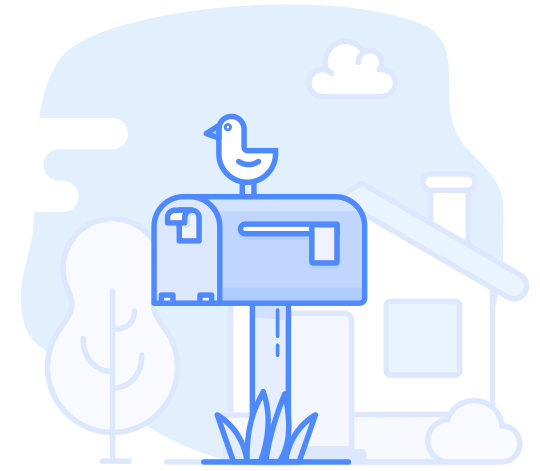
BEFORE YOU GO…
If you’re still staring at a blank screen, wondering how to get started and implement all this knowledge, don’t worry. We’ve compiled a few sample templates for you. Read through them, see which ones would fit your brand and your industry, and then modify them to make them your own.
The respectful open
Hi <First_Name>,
I know you’re very busy as <Professional_Title>, but I’ve been wanting to have a quick chat about bringing <Product> to <Company> because I think it could really help you.
If 15 minutes of your time isn’t too much to ask, then maybe we could jump on a quick Skype call to discuss this?
The cheerful open
Hi <First_Name>,
I’ve been watching Westworld lately, and I’m not sure who’s a robot, and who isn’t anymore. But my system is telling me that our companies’ storylines might be connected.
There’s no maze, however – it’s really simple. I’d like to talk to you about <Product> for <Company>.
If that doesn’t look like anything useful to you, let me know, and I won’t bother you anymore. And if this sounds weirdly familiar, maybe we could jump on a call?
The transparent beginning
Hi <First_Name>,
Because we do <Product_Page_link>, I was looking for companies that might be in need of such a solution.
Visit our website – <Main_Page_link> to see what we’re up to, or skip straight to our FAQ section – <FAQ_Page_link> – to learn exactly what we can give you.
I’d love to jump on a call with you – if you have 15 minutes for a chat, please pick a suitable time slot in my <Calendar_link>. It will make it easy for us to connect.
Straight jump to a helping hand
Hi <First_Name>,
I just wanted to tell you that I really love what you’re doing at <Company>. If I could ever help you with anything, that would be awesome
You might find my experience in <Your_Experience_Domain> useful. I blog a bit about it – here’s a link <Content_Link> if you would like to check out if I’m the real deal.
I’d love to steal some of your time to talk about what you do. Would you mind, maybe, at least a 15-minute call?
The Biz-Dev introduction
Hey [First Name],
I’ve heard amazing things about [Company Name] lately, and I just had to reach out.
[Your Company Name] is showcasing [Company Name] to over 100,000+ potential new customers.
When we asked our customers if they’d be interested in a product like yours, we got a huge resounding “yes”.
I think they would make for a great lifetime [Company Name] customers.
Here is some more info on our reach, our customers, and who we’ve worked with in the past: [Company Website]
Please email me by the 30th, and we’ll make it happen.
Cheers,
The referral email
Hey [First Name],
[Your Name] from [Company Name] here. Hope you don’t mind me reaching out
We help businesses like [Client 1] and [Client 2] to [What you do].
I’m curious who might be best to speak with about [What you wish to sell] at your company?
Cheers,
[Your Name]
The social hook
Hi [First Name],
Based on your [social media], you’re a fan of [idol] – inspiring me to reach out to you here.
What would [idol] be without [point of relation]? [Funny commentary].
[Your company] is the [idol] of [industry or market niche]. Our platform provides [benefit 1]and [benefit 2]. Features like [feature 1], [feature 2], and [feature 3] make your team [benefit 2] – making them ready to boost their fame (much like [idol] and their team).
[First name] – might you be willing to connect for just a few minutes to talk about how we can get your team onto [idol]’s level?
Best,
[Your Name]
The sports talk ice-breaker
Hi [First Name],
I see that you’re a [team] fan, so you must be excited about [player] [player’s achievement].
As [company] continues to scale, your [department] team needs [pain point that you solve for] just as [how the same point applies to the team]. We’re the [player] of [industry/market niche]…[funny comparison].
[First Name], I’d love (if possible) to be referred to the best person on your [department] team to introduce [Your Company] as a means to hit your [goal].
Best,
[Your Name]
The research-backed direct ice-breaker
Hi [First Name],
[Your Name] reaching out from [Your Company] – [Shared detail].
Yep, this is another #coldemail that says who I am and asks for a meeting, but I’ve [specific research you’ve done in person].
[Connection/uncommon commonality].
[Details of your service] – does this sound like something of value to [Company] or maybe something you’re actively looking for?
Here is [piece of content].
Are you open to chatting next week? [Incentive to call].
Thoughts?
Thanks,
[Your Name]
The “competitors’ faults” opportunity
Hey [First Name],
We’ve been hearing from several existing [Competitor]’s customers that they’ve been experiencing significant application performance issues recently. We can imagine your team would be getting frustrated if that’s also happening at [Company]
We’ve developed our solution to support leading enterprises such as [Customer 1], [Customer 2], and [Customer 3] with stability, security, and reliability in mind so you won’t have these problems with [Your Company].
Are you available early next week to discuss why companies like [Customer 4], [Customer 5] and [Customer 6] moved from [Competitor] to [Your Company] this year? If not, please let us know when it’s best to reconnect.
Best, [Your Name]
The statistics hook
Hi [First Name],
On average, [pain point statistic]. Is [Their company] achieving its goals?
[Statistic about most teams].
[benefits of your service]. [pain points company relieves].
[accomplishments of company]. If you are looking to [achieve what product serves], it would be great to connect for a 15-,minute call next week.
Best, [Your Name]
And there you have it. I hope you’ve found this useful, and you’re now ready to get cracking with your next campaign. Remember, if you ever have any questions about optimizing your cold email campaign, check out our resource library, or get in touch at sales@reply.io, and we’ll be more than happy to help out. Here’s to having a great business sales@reply.io and better sales!
Whether it’s inbound, outbound, new user trials or existing customers — we put your email communication on autopilot while keeping it personal.